Project supported by the National Natural Science Foundation of China (Grant Nos. 11547175, 11271008 and 61072147), the First-class Discipline of University in Shanghai, China, and the Science and Technology Department of Henan Province, China (Grant No. 152300410230).
A new six-component super soliton hierarchy is obtained based on matrix Lie super algebras. Super trace identity is used to furnish the super Hamiltonian structures for the resulting nonlinear super integrable hierarchy. After that, the self-consistent sources of the new six-component super soliton hierarchy are presented. Furthermore, we establish the infinitely many conservation laws for the integrable super soliton hierarchy.
In recent years, with the development of integrable systems, super integrable systems have attracted a great deal of attention. Since 1986, Chowdhury and Roy have already considered the super trace identity. [ 1 ] Hu presented the super trace identity in 1997, but he did not give its rigorous proof. [ 2 ] Later, Ma gave a systematic proof of the super trace identity and the expression of its constant γ . [ 3 ] For application, the super Hamiltonian structures of the super AKNS hierarchy and the super Dirac hierarchy have been obtained. Afterwards, super C-KdV hierarchy [ 4 ] and super Boussinesq hierarchy [ 5 ] as well as their super Hamiltonian structures are presented. The Bargmann symmetry constraint and binary nonlinearization of the super Dirac systems were given in Ref. [ 6 ].
Soliton equations with self-consistent sources have been paid considerable attention in recent years. The study on this topic has important physical applications. For example, the nonlinear Schrödinger equation with self-consistent sources is relevant to some problems of plasma physics and solid state physics. There are many methods to obtain exact solutions of soliton equations with self-consistent sources, such as the Darboux transformation method [ 7 ] and the inverse scattering transform method. [ 8 ] There are also some results to consider hierarchies with self-consistent sources. [ 9 , 10 ] Very recently, self-consistent sources for the super Broer–Kaup–Kupershmidt equation hierarchy was presented in Ref. [ 11 ].
The conservation laws play an important role in discussing the integrability for soliton hierarchy. An infinite number of conservation laws for the KdV equation was first discovered by Miura, Gardner, and Kruscal in 1968, [ 12 ] then lots of methods have been developed to find them. This may be mainly due to the contributions of Wadati et al. [ 13 ] Many papers dealing with symmetries and conservation laws were presented. The direct construction method of multipliers for the conservation laws was presented in Ref. [ 14 ].
In this paper, starting from a Lie super algebra, a 3 × 3 matrix super spectral problem is designed. With the help of variational identity, we get a new six-component super soliton hierarchy and its super Hamiltonian structures. In Section 4, the self-consistent sources of the new six-component super soliton hierarchy are obtained. In Section 5, we present the conservation laws for the new super soliton hierarchy.
A soliton hierarchy is based on the spectral problem [ 15 ]


Based on the Lie super algebra G,



We will derive a generalized super soliton hierarchy. To this end, we take a 3 × 3 matrix super spectral problem

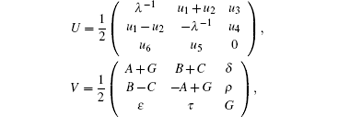








Starting from the stationary zero curvature equation

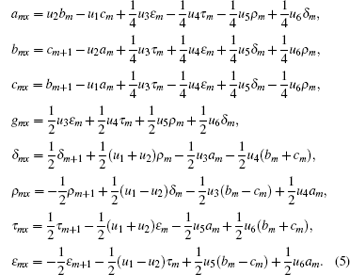






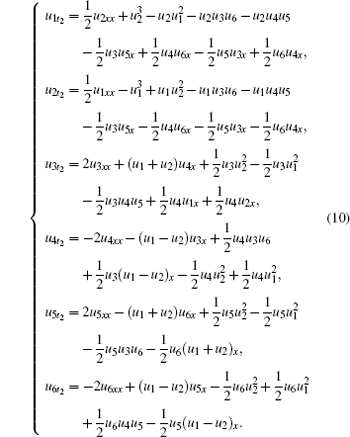

In this section, we will establish super Hamiltonian structures of the new six-component super soliton hierarchy by super trace identity [ 2 , 3 ]




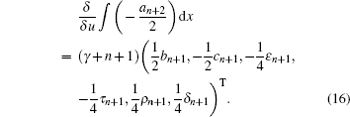

From the recursion relations in Eq. (




Consider the linear system

Based on the result in Ref. [ 17 ], we can show that the following equation:




Based on Eq. (

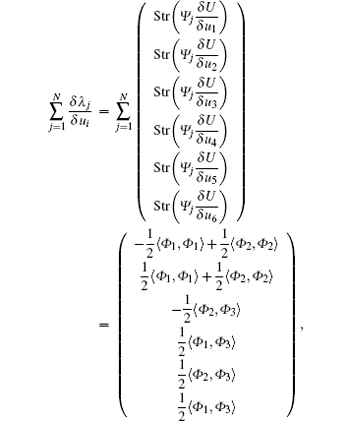
Therefore, the new six-component integrable super soliton hierarchy with self-consistent sources is proposed
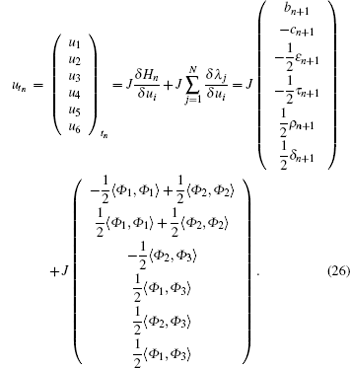


In the following, we will construct conservation laws of the new six-component super soliton hierarchy. We introduce the variables




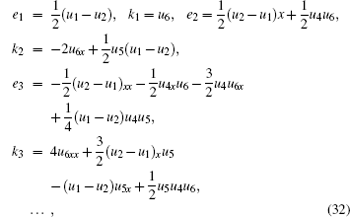
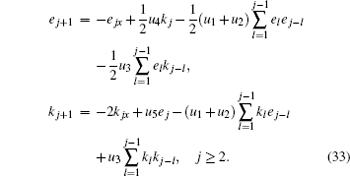
Because of



We expand θ and ν as a series in powers of λ with the coefficients




Starting from Lie super algebras, we obtain a new six-component super soliton hierarchy. With the help of variational identity, the Hamiltonian structures of the six-component super soliton hierarchy can be presented. Meanwhile, the super soliton hierarchy with self-consistent sources is established. Finally, we also derive the conservation laws of the six-component super soliton hierarchy. It is worth noting that the coupling terms of super integrable hierarchies involve Fermi variables, they satisfy the Grassmann algebra which is different from the ordinary one. Sometime we call super integrable system Eq. (
| 1 | |
| 2 | |
| 3 | |
| 4 | |
| 5 | |
| 6 | |
| 7 | |
| 8 | |
| 9 | |
| 10 | |
| 11 | |
| 12 | |
| 13 | |
| 14 | |
| 15 | |
| 16 | |
| 17 | |
| 18 | |
| 19 | |
| 20 |


